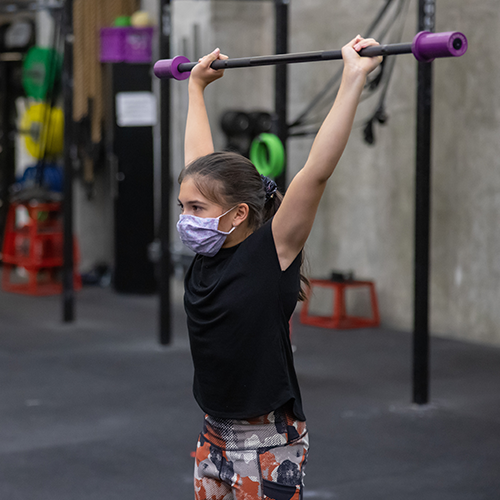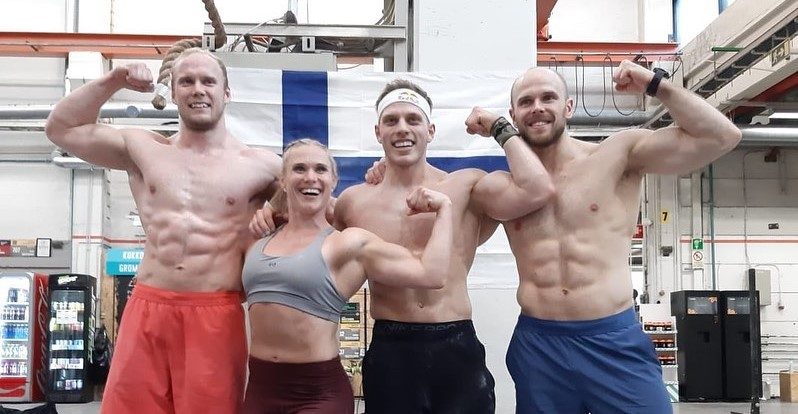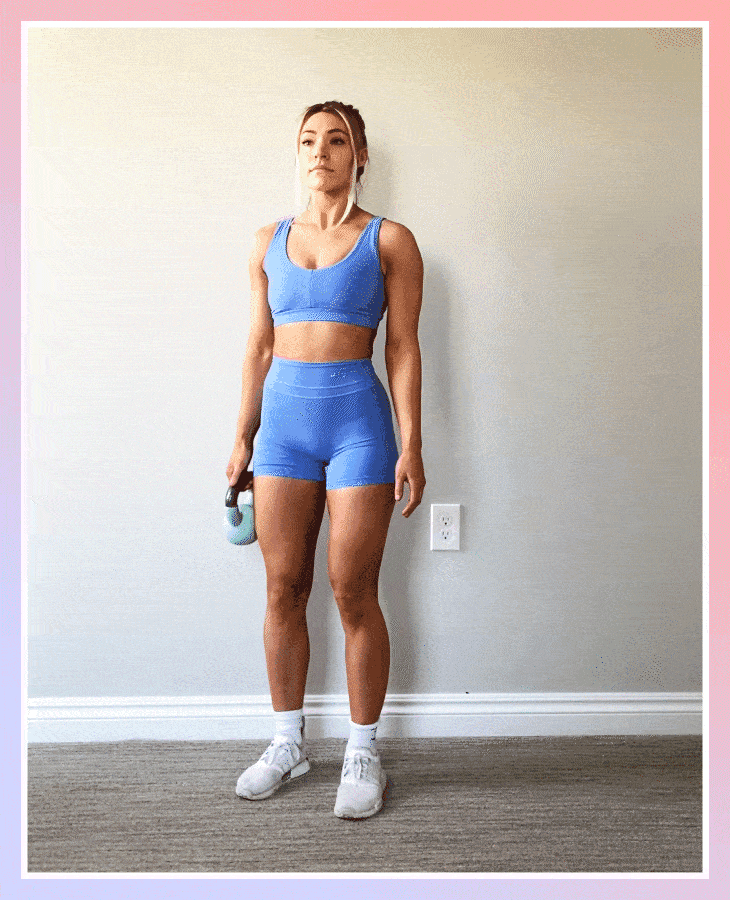
To become a CrossFit instructor, you must first complete the Level One CrossFit Training Course. This course includes 55 multiple-choice questions. The test will allow you to become Level One CrossFit Instructor. The exam is optional, but it is strongly recommended for anyone who wants to earn their certificate. It's not compulsory, but a Certificate of Attenance is available to those who didn't take the test. The certificate of attendance won't confer the same rights or privileges as a Level One Instructor Certificate.
Highlights
The Best of CrossFit Level One
CrossFit Level One Course provides an introduction to CrossFit concepts and terminology, as well the movements. The course is divided into lectures and movement "break out" sessions. Throughout the course, you will practice the exercises and learn how to modify them for a variety of fitness goals. After the course, you'll have a better understanding and be able to begin training others to follow the CrossFit method.
Requirements
You must meet certain conditions before you are allowed to take CrossFit Level 1 training. You must be older than 17 and willingly pay the price. It is necessary to have basic fitness knowledge. You will be able to obtain Level 2 certification by learning the basics of CrossFit. The course covers program design, lesson planning and implementation. It is necessary to have some knowledge of fitness before you can enroll in the course.

CrossFit Level 1 Course Requirements: You must be able perform at least one correct movement before you can take the CrossFit Level 1. The program lasts 2 weeks and consists 50 questions. Small group training sessions are offered and coaches can lead workouts. The class is very interactive, so ensure you take the time necessary to learn the basics.
Cost
CrossFit trainer? You have probably started searching for the best courses. How much does this course cost? CrossFit launched the Level 1 class in 2002. The course costs $1,000. However, you can save $200 if you enroll within 14 days. The course includes digital resources as well as a 30-day after-training series. CrossFit level 2 cost is also $1000. Many gyms will allow your assistant to take both courses.
CrossFit also offers an online Level 1 course, which is a temporary offering that was created to meet the needs of the global community. This online course allows you to obtain your trainer certifications from anywhere in the world. The self-paced course has a 50-question multiple option exam. Live webinars are also available, where participants can ask questions and get guidance on foundational movements.
Online option
The CrossFit affiliate program has just begun its rollout phase. However, there have been mixed reactions from the affiliate community. Some have questioned whether this online option would discourage athletes from joining their local affiliates, while others see it as a pipeline to in-person classes. CrossFit has been creating foundational content since the beginning. It was only possible to access this information through in-person seminars. Anyone can access the CrossFit course online with the new online option.

CrossFit Training developed an online version for the Level I Course in response to the COVID-19 pandemic. The online course provides the same self-paced educational material and a live webinar from CrossFit Seminar Staff. The online course comes with an exam to gauge how well students are grasping the material. CrossFit Level I Course is available in English as well as French, German and Italian.
FAQ
Is it true that kidney stones can be caused by overeating protein?
Protein helps to maintain healthy bones, tissue, and skin. But consuming too much protein can lead to calcium excretion through urine. This can lead kidney stones.
It's important to note that not everyone gets kidney stones after eating more than 2 grams of protein per kilogram (2.2 pounds) of body weight. High amounts of protein can be consumed by some people without causing kidney stones.
Your sodium intake can prevent kidney stone formation. Sodium helps regulate water balance in the kidneys. Too much sodium can lead to kidney stones.
You can also reduce your intake of proteins if you develop kidney stones. Protein accounts for about half the daily caloric requirement of most adults. You'll lose weight if you reduce your intake of protein.
If you do decide to eat more protein, don't go overboard. Aim for less than 20% of total calories from protein.
What is the best 7-day workout program?
A seven-day program should include three days of cardio training (running, biking and swimming), two strength exercise (using free weights or weight machines) and one flexibility/core work out (yoga, Pilates). Each activity should be performed at least once each week. Each session should not last more than 45 minutes.
Cardiovascular Exercise: Running/Biking/Swimming
It is important to complete at least 60 minutes of cardio per week. You can aim for 75 minutes a week for best results. Cardio exercises can increase blood flow and stimulate the growth of muscles.
Strength Training
Cardio exercises focus on the heart and lungs while strength training targets muscles and bones. Strength training builds lean muscle mass, which helps burn calories even when resting.
Flexibility & Core Workouts
Core and flexibility exercises are great ways of strengthening your whole body. Both yoga and Pilates can be great choices.
What does milk do for men?
Consider what other uses you might have for your milk next time that you buy it. It may be a good idea to reduce your coffee intake.
Children and adults both have found milk to be beneficial. The nutrients in milk include vitamin D, calcium potassium, phosphorous and magnesium.
It is also good for digestion and bone strength. Milk products can help adults have better immunity systems and less illness.
Milk is also rich in lactose, so people who cannot digest this sugar easily can enjoy its benefits without experiencing stomach problems.
Try drinking more milk instead of soda or juice. You can strengthen your teeth with the extra calcium and vitaminD found in milk.
Plain low-fat milk can be used to make yogurt if you don’t like the taste. Yogurt is an excellent alternative to milk because it is lower in calories, and contains more protein.
Yogurt also includes probiotics. These help in digestion and improve immunity.
A glass of warm milk is a great way to get a good night's sleep if you're having trouble getting to sleep. Warm milk relaxes muscles, increases serotonin levels and helps you get a good night of sleep.
How many calories do I need to eat each day?
This varies from person to person. The average is 2000 - 2500 calories per day. Based on your age, gender, height and activity level, you will need to calculate how many calories you require.
Statistics
- 10 pounds in a month is likely during a lean bulking phase, especially for beginners. (muscleandstrength.com)
- An estimated calorie range for moderately active adult males falls between 2,200 to 2,800 calories per day, depending on age. (eatright.org)
- Candidates and applicants must pass all four tests at 70% (minimum level) to graduate from Basic Deputy U.S. Marshal (BDUSM) Training. (usmarshals.gov)
- Get free shipping and 25% off today. (healthline.com)
- According to the American Academy of Dermatology (AAD), men over 50 are at a heightened risk of developing it. (healthline.com)
External Links
How To
How can I exercise to burn fat?
Exercise can help you burn calories and increase your metabolism.
Exercise at a moderate intensity to safely lose weight.
To burn fat while exercising, follow these tips:
-
Cardio exercises like walking, running (or jogging), swimming, cycling, running, and/or elliptical training are all good options.
-
Exercise for 30 minutes three times per week.
-
You can add strength training into your exercise routine if you're looking to lose even more weight.
-
Avoid intense exercise. You can build muscle and not break down muscle tissue.
-
During exercise, drink plenty of water. Water helps to flush out toxins from the body and maintains proper hydration.
-
After working out, drink low-fat protein shakes. Protein shakes repair muscles and increase energy.
-
Smaller meals are better for you.
-
Don't skip breakfast! You can feel tired and slow if you skip breakfast.
-
Take care of your mental health. Stressful situations can slow down metabolism.
-
Keep a positive attitude. Studies show that people who believe they are overweight gain more weight then those who think they are attractive.
-
Sleep enough. It is harder to lose fat if you don't get enough sleep.
-
Always be active. Be sure to get up and move around every hour or two.
-
Maintain a healthy diet. A healthy diet will help you feel fuller for longer.
-
Find relaxation techniques. An anxious mind won't allow your body release stress hormones, which can lead to the destruction of muscle tissue.
A balanced diet is one that includes all of the essential nutrients required for growth.
Eat six small meals each day instead of three large ones. This allows your body time to digest what you've eaten.
For strong bones, we need 500 mgs of calcium daily. Calcium can also be found in milk products, yogurt, fortified Soy beverages, orange Juice, cereals and bread.
Calcium is found in green leafy vegetables, beans, tofu, seeds, nuts, and cheese.
Vitamin D is essential for calcium absorption. Vitamin D is found in certain fortified foods, such as egg yolk and fatty fish.
Vitamin E is crucial for skin health. Vitamin E is found in vegetable oils and wheat germ oil, as well as peanuts, almonds and sunflower seeds.
Zinc is essential for healthy immunity and wound healing. Zinc can be found in seafood, legumes and meats.
Zinc deficiency can cause fatigue and loss of appetite. It can also lead to depression and impaired immunity.
Eating too much sugar causes insulin resistance, which increases blood glucose levels. Insulin resistance leads directly to weight gain.
Insulin resistance is caused by high blood levels of free-radicals. Free radicals can be molecules with unpaired electrons that cause damage to cell membranes.
Most free radicals come from pesticides herbicides, food additives, preservatives smoking, radiation, chemical in cosmetics, lotions and household cleaning supplies.
Free radical damage can lead cancer, heart disease or diabetes, arthritis, asthma, or other forms of aging.
Antioxidants are essential for preventing free radical damage. Antioxidants protect against oxidative damage.
Vitamin C (found on citrus fruits), Beta carotene, found in carrots and sweet potatoes, spinach and broccoli, cantaloupe (found in tomatoes, mangoes and peppers), and Vitamin E (found nuts, olive oil and avocados).
Selenium, manganese (and zinc) are other antioxidant nutrients.
Selenium helps protect cells from oxidative damage caused by free radicals. Selenium is also found in Brazil nuts.
Copper protects the brain and eyes as well as the lungs and red blood cells. Copper is found in shellfish, poultry, meat, and organ meats.
Manganese forms an essential part of bone structure. Manganese can be found in brown rice and spinach as well as bananas, prunes raisins, oatmeal, lentils, and oatmeal.
Zinc is essential for normal growth, reproduction, wound healing, and average growth. Zn can also be found in white fish, lean cuts of meat, poultry, and eggs.